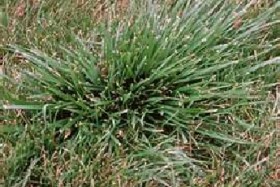Mushrooms & Puffballs

At some time or another, most lawns are troubled with mushrooms or puffballs. Varying in shape, size and growth habits, mushrooms may be found growing in clumps or individually in a lawn. Puffballs resemble balls or pears growing in a lawn. Mushrooms and puffballs are both caused by fungi that thrive on organic matter in
- Published in Lawn & Weed Problems
Oxalis

Oxalis (also known as yellow wood sorrel) is an upright perennial broadleaf weed which acts as a troublesome invader of lawns in our area. Because of its ability to reseed, oxalis can also be considered an annual plant. Oxalis stems are sparsely covered with fine hairs and branch out from the base of the plant.
- Published in Lawn & Weed Problems
Tall Fescue

Tall fescue is an unsightly, objectionable plant which frequently invades turf grass areas; it is often referred to as “bunch grass” because of the scattered tall clumps which appear above the more desirable grass in bluegrass lawns. This grass is often confused by home owners as crabgrass. Tall Fescue cannot be controlled with spring pre-emergent
- Published in Lawn & Weed Problems, Lawn Care Tips
Thatch

Thatch is a dense layer of decomposing dead roots, underground stems and leaves between the visible grass blades and the soil surface. Actively growing lawns accumulate thatch as a natural occurrence. A build-up occurs when the production of this layer exceeds the ability of the soil’s organisms to break it down. When mowing at the
- Published in Lawn Care Tips
Watering Practices

Proper watering practices are required throughout the year for your lawn’s best appearance. Proper lawn watering is essential during drought periods to be effective and to conserve water. Amount: Lawn grasses have a minimum water requirement each week throughout the growing season. Any quantity less than this amount limits the turf grass vigor and ultimately
- Published in Proper Watering
 Green Pointe Lawn Care
Green Pointe Lawn Care